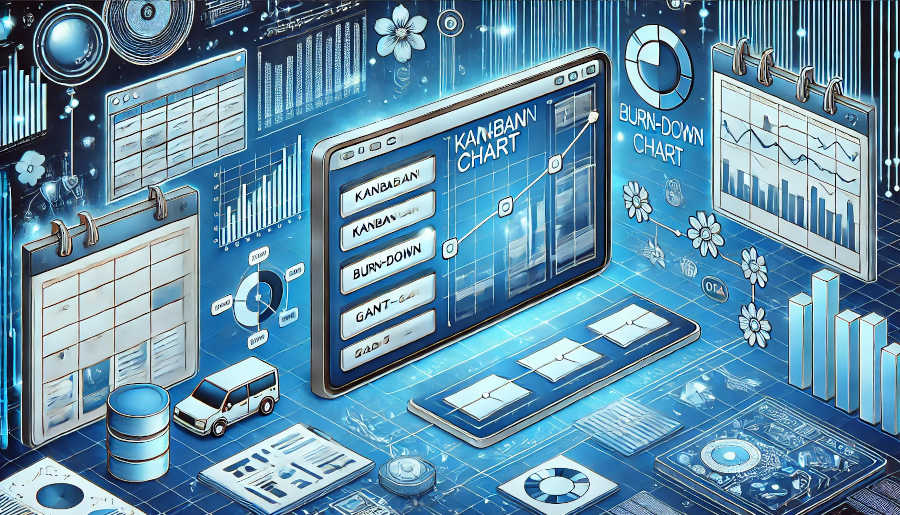The Integrated Product Development (IPD) process is a comprehensive and structured approach to product development that aims to bring products to market faster, with higher quality, and at a lower cost. Progress management and monitoring are crucial aspects of the IPD development process as they ensure that projects stay on track, resources are effectively utilized, and the final product meets the desired requirements. By implementing effective progress management and monitoring methods, organizations can proactively identify and address issues, make informed decisions, and ultimately increase the likelihood of project success.
Effective progress management and monitoring in the IPD development process involve setting clear goals and milestones, establishing a robust project plan, and regularly tracking and reporting progress. This allows project teams to have a clear understanding of where they stand in the development process, identify any deviations from the plan, and take corrective actions in a timely manner. Additionally, progress management and monitoring also involve managing risks and issues, ensuring effective communication among team members, and aligning the project with the overall business strategy.
In this article, we will explore various progress management and monitoring methods in the IPD development process. We will discuss the importance of setting clear goals and milestones, the role of project planning, different techniques for tracking progress, and the significance of effective communication and risk management. By understanding and implementing these methods, organizations can enhance their ability to manage IPD projects effectively and achieve better business outcomes.
Setting Clear Goals and Milestones
Clear goals and milestones are the foundation of effective progress management in the IPD development process. Goals define the overall purpose and desired outcomes of the project, while milestones mark significant points in the project timeline that indicate progress towards those goals. When goals and milestones are well-defined, they provide a clear direction for the project team, help in resource allocation, and serve as a basis for measuring progress.
To set clear goals, it is essential to involve all relevant stakeholders, including product managers, engineers, marketing teams, and customers. This ensures that the goals are aligned with the business objectives and meet the needs of the end-users. Goals should be specific, measurable, achievable, relevant, and time-bound (SMART). For example, instead of setting a vague goal like "improve product performance," a SMART goal would be "reduce product failure rate by 20% within six months."
Milestones, on the other hand, should be carefully selected to represent key achievements in the project. They could include the completion of a design phase, the successful testing of a prototype, or the release of a beta version. Each milestone should have clear acceptance criteria, which define what needs to be accomplished for the milestone to be considered complete. By breaking the project into smaller, manageable milestones, it becomes easier to track progress and identify any potential delays or issues early on.
The Role of Project Planning
Project planning is a critical step in the IPD development process as it provides a roadmap for the project. A well-structured project plan outlines the tasks, timelines, dependencies, and resources required for each phase of the project. It serves as a reference document for the project team, enabling them to coordinate their efforts and work towards a common goal.
The project plan should start with a high-level overview of the project scope, objectives, and deliverables. This provides a clear understanding of what the project aims to achieve and what will be produced at the end. Next, the plan should break down the project into smaller, manageable tasks and assign them to specific team members or groups. Each task should have a clear start and end date, as well as any dependencies on other tasks.
In addition to task planning, the project plan should also include a resource plan. This identifies the resources, such as personnel, equipment, and budget, required for each task. By accurately estimating the resources needed, organizations can ensure that they have the necessary resources available when needed and avoid any resource shortages that could delay the project. The project plan should also include a risk management plan, which identifies potential risks and outlines strategies for mitigating them. This helps in proactively addressing issues and minimizing their impact on the project.
Tracking Progress
Once the project plan is in place, it is essential to track progress regularly to ensure that the project is on track. There are several techniques that can be used for tracking progress in the IPD development process. One of the most common methods is the use of Gantt charts. Gantt charts provide a visual representation of the project schedule, showing the start and end dates of each task, as well as their dependencies. By comparing the actual progress of tasks against the planned schedule on a Gantt chart, project managers can quickly identify any delays or deviations.
Another technique for tracking progress is the use of key performance indicators (KPIs). KPIs are specific metrics that are used to measure the performance of the project against its goals. For example, KPIs could include the percentage of tasks completed on time, the number of defects found during testing, or the customer satisfaction rating. By regularly monitoring KPIs, project teams can assess the health of the project and take corrective actions if necessary.

In addition to Gantt charts and KPIs, regular status meetings and progress reports are also important for tracking progress. Status meetings provide an opportunity for team members to share updates on their tasks, discuss any issues or challenges, and coordinate their efforts. Progress reports, on the other hand, provide a written summary of the project's progress, including completed tasks, upcoming tasks, and any issues or risks. These reports are typically shared with stakeholders to keep them informed about the project's status.
Effective Communication
Effective communication is essential for progress management and monitoring in the IPD development process. Clear and timely communication among team members, stakeholders, and customers helps in ensuring that everyone is on the same page, expectations are managed, and issues are addressed promptly.
Within the project team, communication should be open and transparent. Team members should feel comfortable sharing their ideas, concerns, and progress updates. Regular team meetings, both formal and informal, can help in fostering a collaborative environment and promoting communication. Additionally, the use of communication tools such as instant messaging, email, and project management software can facilitate real-time communication and ensure that information is shared quickly.
Communication with stakeholders is also crucial. Stakeholders, such as senior management, marketing teams, and customers, need to be kept informed about the project's progress, risks, and any changes. This can be achieved through regular progress reports, presentations, and one-on-one meetings. By involving stakeholders in the communication process, organizations can gain their support and ensure that the project remains aligned with their expectations.
Finally, communication with customers is essential for ensuring customer satisfaction. Customers should be kept informed about the product development process, any features or changes, and the expected delivery date. This helps in managing customer expectations and building trust. Additionally, feedback from customers should be actively sought and incorporated into the development process to ensure that the final product meets their needs.
Risk Management
Risk management is an integral part of progress management and monitoring in the IPD development process. Risks can arise at any stage of the project and can have a significant impact on the project's schedule, budget, and quality. By identifying, assessing, and mitigating risks proactively, organizations can minimize their impact and increase the likelihood of project success.
The first step in risk management is risk identification. This involves identifying potential risks that could affect the project, such as technical challenges, resource shortages, changes in market conditions, or regulatory issues. Risk identification should involve all relevant stakeholders, including project team members, subject matter experts, and customers. By gathering input from different perspectives, organizations can identify a comprehensive list of risks.
Once risks are identified, they need to be assessed in terms of their likelihood of occurrence and potential impact on the project. This helps in prioritizing risks and focusing on those that pose the greatest threat. Risks can be classified as high, medium, or low based on their likelihood and impact. High-risk items should be addressed immediately, while medium and low-risk items can be monitored and managed as the project progresses.
After assessing risks, the next step is to develop strategies for mitigating them. Mitigation strategies could include developing contingency plans, allocating additional resources, seeking expert advice, or modifying the project plan. The goal of risk mitigation is to reduce the likelihood of risks occurring or to minimize their impact if they do occur. By implementing effective risk management strategies, organizations can better manage uncertainties and keep the project on track.
Conclusion
In conclusion, progress management and monitoring are essential for the success of IPD development projects. By setting clear goals and milestones, creating a detailed project plan, tracking progress effectively, promoting effective communication, and managing risks proactively, organizations can enhance their ability to deliver high-quality products on time and within budget.
Clear goals and milestones provide a sense of direction and serve as a basis for measuring progress. A well-structured project plan helps in coordinating efforts, allocating resources, and managing dependencies. Tracking progress using techniques such as Gantt charts, KPIs, status meetings, and progress reports allows for early identification of issues and timely corrective actions. Effective communication among team members, stakeholders, and customers ensures that everyone is informed and involved in the project. And finally, risk management helps in minimizing the impact of uncertainties and increasing the likelihood of project success.
Organizations that invest in implementing these progress management and monitoring methods in their IPD development processes are more likely to achieve their business objectives, gain a competitive edge in the market, and build long-term relationships with their customers. As the business environment continues to evolve and become more complex, the importance of effective progress management and monitoring in IPD development will only increase. Therefore, it is crucial for organizations to continuously improve their processes and practices in this area to stay ahead of the curve.
ARTICLE TITLE :Progress management and monitoring methods in the IPD development process ,AUTHOR :ITpmlib

















